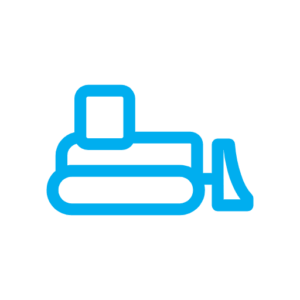Civil 3D Training by U.S. CAD Online University

Autodesk Vehicle Tracking – Swept Path Analysis in Civil 3D (201)
On completion of this course, users will be able to do the following:
- Configure the settings for Vehicle Tracking Swept Path
- Review the Vehicle tracking library
- Use various drive options to check and edit vehicle movement through a design
- Check for ground conflicts along the path of the vehicle
- Graphically display vehicle outlines along a path and the profile of the vehicle
- Animate the vehicle's path and generate reports

Plan Production in Civil 3D (101)
On completion of this course, users will be able to do the following:
- Explain the steps used to create plan and profile sheets in Civil 3D
- Create View Frames to produce printable areas along an alignment
- Use view frame grips to adjust the display of each sheet
- Create plan and profile sheets based on the location of the View Frames
- Edit Sheet Set and Sheet properties to update title block information

Working with Piping Tools in Civil 3D (101)
On completion of this course, users will be able to do the following:
- Discuss the types of networks that can be created in Civil 3D
- Configure pipe and pressure pipe network settings
- Create and edit pipe networks from objects and layout tools
- Create and edit pressure pipe networks from objects and layout tools
- Adding labels to networks in plan and profile, create network tables and reports

Introduction to Grading Tools in Civil 3D (101)
On completion of this course, users will be able to do the following:
- Use feature lines and grading objects to create a proposed surface
- Edit feature lines and grading objects to modify the proposed surface
- Calculate the volume between the two surfaces

Surfaces in Civil 3D (101)
On completion of this course, users will be able to do the following:
- List the steps required to build a Civil 3D surface
- Adjust and edit a surface using its properties
- Add existing conditions data to a surface
- Use drawing objects to improve accuracy
- Add additional surface data and define the extents of a surface
- Analyze and visualize surface properties, such as elevation data
- Label elevations, slopes, spot elevations, and watersheds
- Calculate cut and fill volumes

Working with Parcels in Civil 3D (101)
On completion of this course, users will be able to do the following:
- Draw parcel layouts from a legal description
- Create parcels from objects in the drawing, an external reference, or by layout
- Change parcel properties, like style, color, or line type
- Work with parcel numbers, rename, and renumber parcels
- Add and edit parcel labels, tables, and parcel reports

Getting Started in Civil 3D (101)
On completion of this course, users will be able to do the following:
- Switch between Civil 3D, Map 3D, and AutoCAD tools.
- Locate the basic features and commands of the Civil 3D interface.
- Use Civil 3D Prospector to access tools and commands.
- Access and generate pre-defined reports regarding AEC data.
- Create and assign object and label styles to change Civil 3D object appearance.

Intermediate Pipe Networks in Civil 3D (201)
On completion of this course, users will be able to do the following:
- Understand Parts List and Put a parts List together
- Using Parts Rules to create/layout a pipe networ.
- Edit a Pipe Network graphically and from the layout tools
- Create Alignments and Profiles from a pipe network
- Conduct and Interference Check and pipe crossings
- Adding labels to networks in plan and profile, create network tables and reports

Site Grading Best Practices in Civil 3D (201)
On completion of this course, users will be able to do the following:
- Review and “Clean” the Base File
- Discuss and generate the EG Surface
- Discuss and Create Data Shortcuts
- Review and go through the Corridor Model Workflow
- Site Grading Workflow
- Combine the Data for other Project Designs

Feature Lines, Grading and Surfaces in Civil 3D (201)
On completion of this course, users will be able to do the following:
- Residential site grading using parcel lines.
- Use Slope Analysis to verify grading meets requirements.
- Verify design road ties into grading.
- Review available Feature Line tools.
- Parking lot grading using feature lines.
- Pasting Surfaces.

Cross Sections and Quantities in Civil 3D (201)
On completion of this course, users will be able to do the following:
- Create Sample Lines along the corridor model
- Create Draft and Production cross-section views
- Add a new cross-section to the existing view Layout
- Calculate earthwork and material quantities from the Sample Lines
- Generate volume reports and tables for plan production

Rehab Corridors in Civil 3D (201)
On completion of this course, users will be able to do the following:
- Create a Rehab Corridor and establish lane properties and rehab input values
- Use the Rehab Corridor Editor to makes changes to the corridor
- Create a report Rehab Corridor Report displaying cross and/or milling/leveling information

Intermediate Roadway Corridors in Civil 3D (201)
On completion of this course, users will be able to do the following:
- Model a typical Cul-De-Sac and assemble the required data including assemblies/subassemblies, alignments, and profiles
- Model corridors using an Assembly Offset and conditional subassemblies
- Model a 4-lane road with a median and intersection
- Create corridor surface(s) for future pipe designs, cross-sections, and earthwork quantities

Understanding Assemblies in Civil 3D (201)
On completion of this course, users will be able to do the following:
- Discuss the attachment options for Civil 3D Subassemblies
- Explain Point, Link, and Shape Codes assigned to Civil 3D Subassemblies
- Discuss Target Parameters for variable corridor designs
- Review output options available on the Corridor Launch Pad
- Note additional subassemblies
- Labeling using Code Set Styles

Introduction to InfraWorks in Civil 3D
On completion of this course, users will be able to do the following:
-Navigate the InfraWorks Home screen
-Create Proposals for multiple conceptual design options
-Apply a conceptual design to the model
-Review the Sun and Sky settings, discuss the measuring tools, and add a Terrain Theme
-Import the InfraWorks data into Civil 3D

Introduction to Corridor Modeling in Civil 3D (101)
On completion of this course, users will be able to do the following:
- Explain the different types of assemblies in Civil 3D
- Create and edit an assembly for a corridor design
- Create and edit a corridor model
- Create corridor surfaces
- Review and edit corridor sections
- Visualize and analyze the corridor in Civil 3D

Grading Surfaces and Best Practices in Civil 3D
On completion of this course, users will use civil 3d best practices to perform the following:
- Create Sample Lines along the corridor model
- Create Draft and Production cross section views
- Add a new cross section to an existing view Layout
- Calculate earthwork and material quantities from the Sample Lines
- Generate volume reports and tables for plan production

Site Plan Grading Techniques in Civil 3D
On completion of this course, users will be able to do the following:
- Residential site grading using parcel lines
- Use Slope Analysis to verify grading meets requirements
- Verify design road ties into grading
- Review available Feature Line tools
- Parking lot grading using feature lines
- Pasting Surfaces

Volume and Quantity Tools in Civil 3D (101)
learn how to sample the existing conditions and final design to calculate earthwork quantiles using Civil 3D. Along the way, you’ll learn how to create and display cross-sections to visualize the design against the sites current state. On completion of this course, users will be able to do the following:
- Sample the existing and design data along an alignment for earthwork
calculations and cross-sections.
- Calculate earthwork and material quantities from the sampled data.
- Generate earthwork tables and reports.
- Create cross sections displaying the existing and proposed surfaces as well as corridor and pipe network geometry.
- Create cross section sheets.

Creating Profiles in Civil 3D
Learn how to create and edit the data in the drawing environment. On completion of this course, users will be able to do the following: Discuss profiles and profile view components in Civil 3D, Create an existing ground profile and profile view, Create and edit a finished ground profile using the available tools, Profile and Profile View labels.

Creating Alignments in Civil 3D (101)
On completion of this course, users will be able to do the following: Explain the use of Sites in relation to alignments, Discuss criteria-based designs and alignment types, Create and edit alignments, Add alignment labels and tables.

Survey Tools in Civil 3D
Learn how to work with the Survey database within Civil 3D. Along the way, you’ll learn automated field to finish tools, how to import data into the survey database as well as access and edit the imported data in the drawing environment.

Project Management in Civil 3D (101)
COURSE DESCRIPTION: In this course you’ll learn about project structures and how to create new projects and moving data between projects. You will practice using Data Shortcuts to create references to Civil 3D object data to share and work with current design data.
View BIM 360 Courses
View AutoCAD Courses
View Revit Courses
View Formit Courses

